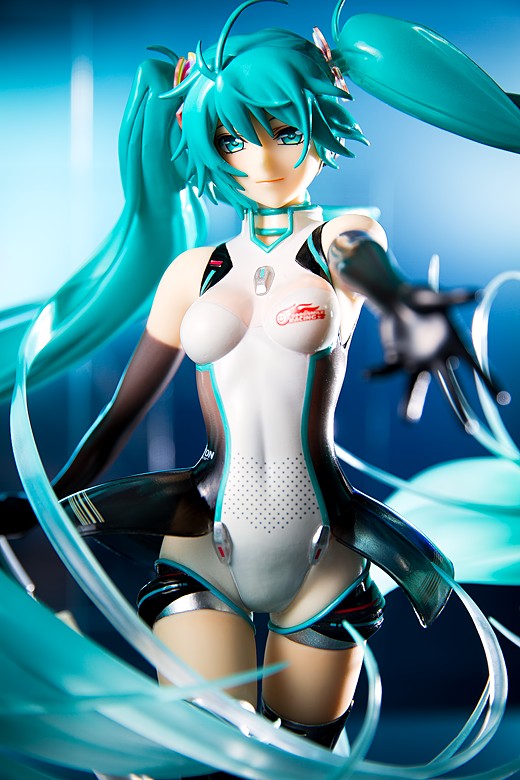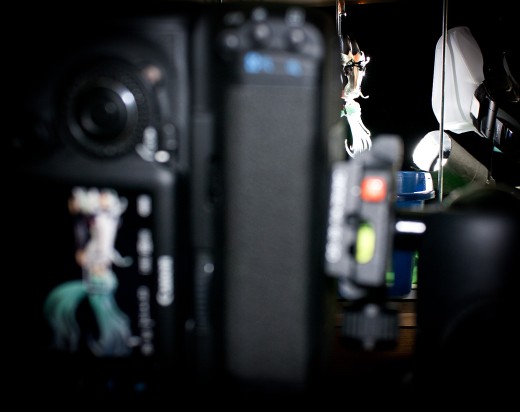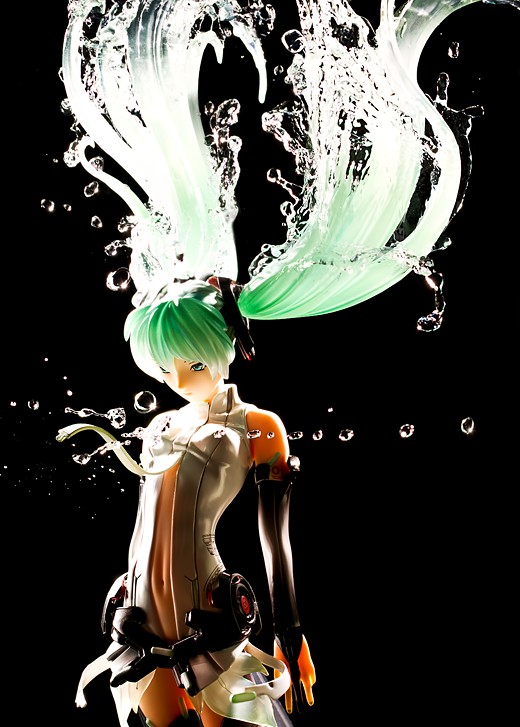Another day, another Vocaloid figure. The Vocaloid phenomenon offers a little something for everyone. To amateur musicmakers, it is an empowering tool, giving them the ability to add vocals to their instrumental tracks. For artists, it is a source of inspiration for their illustrations. For companies, it’s a reliably fat cash cow – slap a Vocaloid image on a product or insert one of the characters into a video game and watch the units fly off the shelves. A few companies have taken this commercial exploitation to another level; Sega, for example, loves throwing her into games that she has no business being in. And Good Smile Company too, who have made so many products featuring her likeness that she might as well be their mascot. At least in the case of their auto racing team, it seems that this is literally true, as this figure represents.
Continue reading
Recent Reviews
Recent Comments
Directory
- Figure Reviews
- Alpha Omega
- Amakuni
- Alphamax
- Aniplex
- Alter
- Aquamarine
- Art Storm
- Banpresto
- Beat
- Blackberry
- Cobra Kai
- Daiki Kougyou
- E2046
- Embrace-Japan
- empty
- First Class
- Flare
- FREEing
- Gift
- Giga Pulse
- Good Smile Company
- Grands
- Griffon
- Hobby Japan
- Kaitendoh
- Kaiyodo
- Keumaya
- Kotobukiya
- Lechery
- Max Factory
- MegaHouse
- Miyabiya
- Movic
- Native
- New Line
- Orchid Seed
- Phat Company
- Plum
- Q-Six
- Ques Q
- Questioners
- Rocket Boy
- Sideshow
- SkyTube
- Union Creative
- Vertex
- Volks
- Wave
- XM Studios
- Yamato
- Non-Anime Figures
- Dakimakura Reviews
- Eroge Reviews
- vmf50 Doll Posts
- Preorder Outlooks
- Shot Breakdowns
- Video Games
- Random Thoughts
- Figure Reviews
Archives















